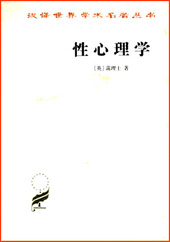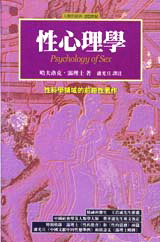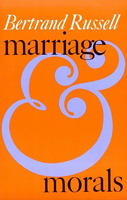赫希菲尔德性学资料库
Archiv für Sexualwissenschaft
原著:[德]欧文•黑伯乐(Erwin Haeberle);译者:[中国]彭晓辉;校对者:[美]阮芳赋
Original: Erwin Haeberle [Germany]; Translator: Xiaohui Peng [China]; Reviser: Fang-fu Ruan [USA]
 II. 先驱者 (1896 -
1936)
上一页 下一页
返回目录
返回首页
II. 先驱者 (1896 -
1936)
上一页 下一页
返回目录
返回首页 
| 1896年 | 意大利精神病学家帕斯夸里·彭塔(Pasquale
Penta)编辑第一本完全专注于性问题的科学杂志:《Archivio delle
Psicopatie Sessuali》。
英国私家学者哈夫洛克·霭理士(Havelock Ellis)开始撰写“性心理学研究录”(Studies in the Psychology of Sex,其末卷完成于1928年)。他的性心理学研究录因不能在英国出版,故而在美国和德国(以译本)出版。英国读者终于首次知晓霭理士,是通过霭理士的“不会造成伤害的”小品文集《论生活与性》(On Life and Sex)。 霭理士(1859-1939)及其著作《性心理学》中译本(左:大陆;右:台湾) |
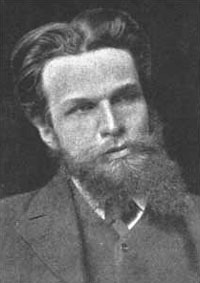 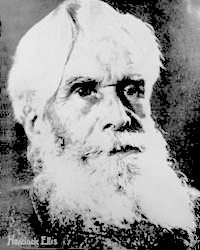
|
| 1897年 | 柏林医生马格纳斯·赫希菲尔德(Magnus Hirschfeld)创建“科学的人道主义委员会”(Scientific Humanitarian Committee)——世界上第一个“同性恋权利”组织。该委员会旨在废止德国反同性恋刑法第175条款-惩罚男性间性接触的法律条款。为支撑这个委员会,赫希菲尔德主编着“中间性论坛年鉴”(Yearbook for Intermediate Sexual Stages,1899-1923)。[1997年在柏林该委员会100周年纪念庆典上,举办了大型展览“同性恋激进主义100年”(One Hundred Years of Gay Activism)]。 |
赫希菲尔德(1868-1935) |
| 赫希菲尔德的竞争对手、柏林医生艾伯特·莫尔(Albert Moll)发表《性欲调查》(Investigations Concerning the Libido Sexualis)专著。
莫尔(1862-1939) |
| |
| 1902年 | 在阿尔佛雷德‧布拉斯科(Alfred Blaschko)和亚伯特‧奈瑟(Albert Neisser)等人的倡议下,“德国对抗性病协会(German Society for the Fight Against Venereal Diseases)在柏林创建。。 | |
| 1903年 | 法国作家雷米·德·古尔蒙(Rémy de Gourmont,1858-1915)发表普及读物《性爱的自然哲学》(Physique de l'amour),其中含有动物性行为的描述和解释。 | |
| 1903 -04年 |
马格纳斯·赫希菲尔德开始进行同性恋统计学调查。由于抱怨不断,该调查研究被法律行动所终止。 | |
| 1904年 | 内分泌学家尤金·斯坦纳赫(Eugen
Steinach)先于布拉格、后于维也纳研究性激素对动物和人体发育的效应。通过性腺移植的方法,他成功地使雄性老鼠雌性化和雌性老鼠雄性化。 尤金·斯坦纳赫(1861-1944) |
|
| 在维也纳,人种学者弗里德瑞克·瑟咯门·克荛斯(Friedrich Salomon Krauss)开始出版年鉴《人类繁衍》(Anthropophyteia)。这个年鉴(10期主刊加大量的增刊)包括他亲自在巴尔干半岛收集的很多有关性的民俗学素材。 他因而成为“人类性学”先驱,其成果获得了西格蒙德·弗洛伊德(Sigmund Freud)、爱文·布洛赫(Iwan Bloch)、马格纳斯·赫希菲尔德、弗朗茨·博厄斯(Franz Boas)以及其他许多学者的高度赞誉。可是,到了1913年,由于受到各种各样的有关淫秽罪的审判,他最后受到了毁誉性的打击,其往后的学术生涯受到了极大的削弱,甚至于作为私人学者也步履艰难。 |
克荛斯(1859-1938) | |
| 1905年 | 弗瑞兹·施奥丁恩(Fritz
Schaudinn)发现导致梅毒的有机体螺旋菌苍白螺旋体(Treponema
pallidum)。
施奥丁恩(1871-1906) |
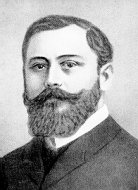
|
| 瑞士精神病学家奥伽斯特·福勒尔(Auguste Forel )发表专著《性问题》(The Sexual Question),该书唤起了顺应时代的革命呼声(废止大多数有关性的法律和赞成同性性伴结婚等等)。福勒尔慎重地把医学观点与社会-政治观点柔和在一起。他的实行有良好预期的“优生”(即通过避免遗传性疾病达到主动改善人类遗传素质)的提议不幸携带着某些(未被认可的)极权主义“人种卫生学”政策的胚芽,诸如后来由纳粹颁布的改良人种的政策就是一个极端的案例。 |
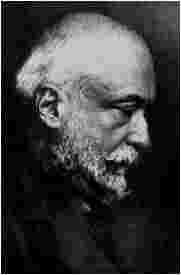
福勒尔(1848-1931) | |
| 海伦·斯托克(Helene Stöcker)与其他学者一起创建“保护母亲协会”(Bund für Mutterschutz),致力于保护未婚母亲和私生子权利的法律平等。其支持者、皮肤科医生马克斯·马库斯(Max Marcuse)稍后成了《性科学杂志》(Zeitschrift für Sexualwissenschaft)的编辑。 | 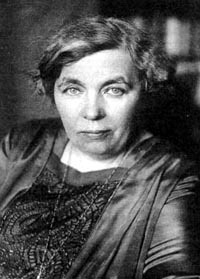
斯托克(1869-1943) |
| 维也纳医生西格蒙德·弗洛伊德(Sigmund Freud)发表“性学三论”(Three Essays on the Theory of Sex)。在书中,他描述了人的性心理“正常”发展过程,也描述了“倒错(perversions)”-即与规范不相符的行为。他的理论基于心理分析学说(即精神或心灵测试)。按照弗洛伊德的学说,“性驱力”要经历一个“成熟”的过程,其中不同的“驱力部分”在“性心理发育(genitality,【心】——译者注)”的成熟过程中,会变为潜意识。个人的“性驱力”成熟的三个主要时期是:1.口欲期;2. 肛门性欲期;3.生殖器性欲期。在此之后的儿童期,也存在着“潜伏期”,即性驱力处于蛰伏状态,直到青春期才开始再度苏醒。 | 
弗洛伊德(1856-1939) | |
| 1906年 | 保罗•艾利希(Paul
Ehrlich )和日本合作者秦佐八郎
(Sachahiro Hata,1873-1938)开发出第一种有效的梅毒医学治疗方法[用一种叫“撒尔佛散(Salvarsan”)的方法]。
美国无政府主义者、女权主义者和早期妇女权利和生育控制的倡导者艾玛·金曼(Emma Goldman)创办杂志《大地》(Mother Earth),刊载有关政论性和哲学文章,也接受做母亲的作者撰写的小说等文学类投稿。 |
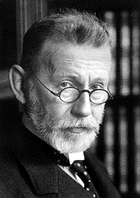
艾利希(1854-1915) |
| 1907年 | 柏林医生爱文·布洛赫(Iwan Bloch)发表著作《我们时代的性生活》(The Sexual Life of Our Time)。书中,他要求建立性科学(Sexualwissenschaft),要按照这门学科自身规律把它作为一门科学学科来建设,即按照自然科学也按照人文科学的规律整合成一门学科。曼替伽扎(Mantegazza)仍称之为“爱(love或amore)”的东西,自那时以后在科学文献中永远地变成了“性爱(sexuality)”。 |
布洛赫(1872-1922) |
| 1908年 | 马格纳斯·赫希菲尔德编辑第一本性科学杂志(Zeitschrift für Sexualwissenschaft)。这本月刊生存了仅一年(12期)。它不仅包括医学论文投稿,而且刊载科学家和学者范围广泛的撰稿,从人类学家、犯罪学家到哲学家、历史学家的稿件,所及论题宽泛。 | |
| 1909年 | 艾伯特·莫尔发表《儿童的性生活》(The Sexual Life of the Child),书中,莫尔无视弗洛伊德的精神分析理论,认为这个理论并不科学。在他的这本专著里,莫尔第一次提出人体性反应的4-相周期划分模式:1. 性欲快感激发期;2. 快感平稳感受期;3. 性欲快感颠峰期;4. 骤然释放期。 | |
| 日本军医、作家森鸥外[Ogai Mori为笔名,其真名叫林太郎(Rintaro Mori)——译者注]发表自传体著作《性生活》(Vita Sexualis,其全集共38卷——译者注),书中,他描述了自己青春期独处时、清醒时、甚至冷静时的性体验。(他也以不参杂任何道德判断的笔调记录了同学的同性恋事件。)该书出版不久就被查禁。 |
森鸥外(1862-1922) | |
| 1910年 | 马格纳斯·赫希菲尔德引入术语“异装癖者”(transvestit),以把这类人与同性恋者相区分。 | |
| 1911年 | 艾伯特·莫尔发表《性科学手册》(Handbuch der Sexualwissenschaften),其中不仅收录了他自己撰写的论文,而且选用了诸如霭理士等其他性科学家撰写的文章。 | |
| 1912年 | 爱文·布洛赫开始编辑出版《专论性科学全集》(Handbuch der gesamten Sexualwissenschaft in Einzeldarstellungen)。首卷为《卖淫‧卷一》由他自己撰写;第二卷为《男女同性恋》,由赫希菲尔德撰写,由布洛赫撰写的第三卷(《卖淫‧卷二》)在他逝世后才出版。布洛赫于1922年英年早逝,从而结束了其雄心勃勃的出版计划。 | |
| 1913年 | 在柏林,玛格纳斯·赫希菲尔德、爱文·布洛赫、艾伯特·优愣伯格(Albert
Eulenburg)以及其他性学家创立首个“性科学与优生学医学会”(Ärztliche Gesellschaft für Sexualwissenschaft und
Eugenik)。
艾伯特·莫尔也在柏林创立“国际性研究学会”(Internationale Gesellschaft für Sexualforschung)。 |
|
| 1914年 | 玛格纳斯·赫希菲尔德出版其不朽巨著《男女同性恋》(Die Homosexualität
des Mannes und des Weibes,1067页)。
爱文·布洛赫和艾伯特·优愣伯格再一次创立《性科学杂志》(Zeitschrift für Sexualwissenchaft)。 |
|
| 在美国,洛克菲尔(Rockefeller)家族对性研究有了兴趣,并开始寻求支持这项研究的途径。随后的40年里,该家族先通过美国社会卫生局(Bureau of Social Hygiene),随后通过国家研究委员会[the National Research Council (医学分会-性问题研究委员会).]提供了坚实的资金资助。可是,主管基金的科学家们对这个研究课题感到不自在,拒绝把资助基金投向性学研究,而是投向了“无可争议的”基础生物学研究。他们也未能建立性科学图书馆和未收集或未出版一本性科学杂志、甚或未发表一部性学参考书目。此外,他们拒绝邀请霭理士、甚至当玛格纳斯·赫希菲尔德及其同行的性科学家威廉·赖希(Wilhelm Reich)、恩斯特·格拉芬伯(Ernst Gräfenberg)、伯尔哈德·斯伽皮尔柔(Bernhard Schapiro)和汉斯·莱菲尔特(Hans Lehfeldt)流亡到美国时,也拒绝支持或拒绝会见他们。终于,洛克菲尔基金会至少为阿尔弗雷德 C.金西(Alfred C. Kinsey)的研究提供了几笔研究资金。可是,这种资助不久也在来自保守政治和宗教势力的压力下被撤销。 | ||
| 1916年 | 玛格丽特·桑格(Margaret
Sanger)与其妹在纽约布鲁克林开办节育诊所。该诊所几乎马上以“妨害公众安宁”被当局查封。桑格姊妹因违反纽约州反淫秽法而被判刑,在监狱工厂服役30天。她置这些挫折和其他相似的艰难于不顾,仍积极地执着于家庭计划运动达数十年之久,成为不仅在美国而且在国际上的家庭计划运动中是最富影响力的组织者。欲了解桑格自传摘录,请点击此处。
桑格(1879-1966) |
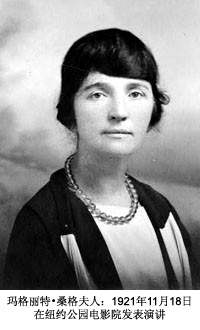 |
| 1919年 | 玛格纳斯·赫希菲尔德在柏林开办第一个“性科学研究所”(Institute for Sexology)。 |
| 1921年 | 在布拉格,作为建立性科学研究所的第一步,查尔斯大学为皮肤病学家裴索卡(Pecirka)教授提供一个性病理学教授职位。裴索卡在柏林从师于赫希菲尔德,后来他意外逝世。于是,该大学于1929 - 1930年间选派另一位年轻皮肤病学家约瑟夫·黑尼(Josef
Hynie)到赫希菲尔德研究所接受培训。黑尼成功地完成了其前任未竟事业。他于1974年在该大学性科学研究所所长任上退休(他被誉为捷克斯洛伐克的性科学奠基人——译者注)。
在莫斯科,教育家维拉·斯基密特(Vera Schmidt)建立“儿童之家”。她遵循精神分析学原理,进行反权威主义的、正面的性教育。这种性教育也意欲不干涉手淫和不干涉相互的性探查。 |
黑尼(1900-1989) |
| 1923年 | 马克斯·马库斯(Max Marcuse)出版《性学袖珍词典》(Handwörterbuch der
Sexualwissenschaft),其中选录了包括弗洛伊德等许多杰出性学家撰写的词条。
马库斯(1877-1963) |
|
| 1926年 | 在柏林,艾伯特·莫尔组织召开“第一届国际性学研究大会”(International Congress for Sex Research)。开幕式在德国国会大厦(Reichstag)举行。“第二届国际性学研究大会”随后于1930年在伦敦举行。
荷兰妇科医生斯尔岛尔·亨坠克·范·德· 维尔德(Theodor Hendrik van de Velde)发表《理想的婚姻》(Ideal Marriage),为非常受欢迎的成人性教育读本,它旨在鼓励男女在性关系内破除性禁忌和张扬性感觉。 玛格纳斯·赫希菲尔德开始出版五卷本的《性知识》(Geschlechtskunde),其末卷于1930年发行。 |
维尔德(1873-1937) |
| 1928年 | 在丹麦医生J. H.朗巴克(J. H. Leunbach)的支持下,玛格纳斯·赫希菲尔德在哥本哈根组织召开国际性学大会,借此机会他创立“世界性改革联盟”(Weltliga für Sexualreform),联盟主席是赫希菲尔德、霭理士和福勒尔。(随后的世界性改革联盟大会:1929年于伦敦、1930年于维也纳和1932年于布尔诺。)此外,该联盟正式主张两性的法律与社会地位的平等,主张避孕和性教育的权利,主张对性立法的改革(“无受害人的”性犯罪的合法化)。 | 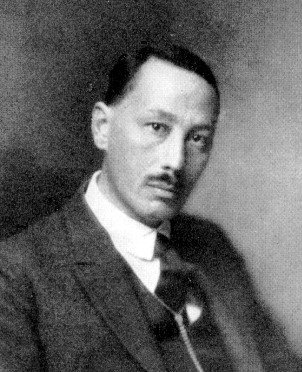
朗巴克(?-?) |
| 1929年 | 人种学家布诺耐咯·马林诺夫斯基(Bronislaw
Malinowski)出版专著《美拉尼西亚西北部野蛮人的性生活》(The Sexual
Life of Savages in North-West Melanesia,美拉尼西亚为西南太平洋群岛,词原意为“黑人群岛”——译者注)。该人类学考察报告描述该群岛的人较少有性压抑,并且后来由玛格丽特·米德(Margaret
Mead)及其它学者提供的后续考察报告,指出该群岛土著的性态度与“西方人的”性态度差异显著,这一事实引人好奇和影响巨大。
凯瑟琳 B. 戴维斯(Katherine B. Davies)出版巨型调查报告《来自两万两千例妇女的性生活因素》(Factors in the Sex Lives of Twenty-Two Hundred Women),该调查文献表明,多数妇女对她们婚前与婚后的性行为、手淫以及使用避孕药具感到满意。 西班牙医生、内分泌学家哥瑞高利·马拉农(Gregorio Marañon)出版《中间性者的内分泌》(Los estados intersexuales)。通过修订与扩充,该书成为他于1930 年完成的最主要著作《人类的性进化及其中间性阶段》(La evolucion de la sexualidad humana y los estados intersexuales)的基础。 |
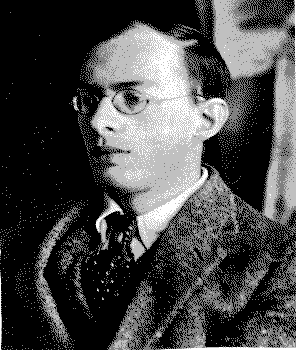
马林诺夫斯基(1884-1942)-S. I. Witkiewicz摄于1911年 米德(1901-1979) |
| 在曼谷,法国裔法官雷内·李昂(René Guyon)开始撰写激进的专著《性伦理研究》(Studies in Sexual Ethics)。他在20世纪早期被泰国政府称为泰兰德(Thailand-为泰国的意思,估计是泰国政府对他的昵称——译者注。)他为所有男女主张性满足的权利,也主张所有男女没有对他人有性暴力的权利。直到1944年完成的全部9卷中,只有6卷用法语发表(也有两卷用英语发表)。在1940年代,李昂也抨击国际联盟(The League of Nations)涉及到性方面的政策,认为对人性是一种压制,而且在1951年,当他谴责联合国背叛了自己的人权宣言(Universal Declaration of Human Rights)时,再一次批评了国际联盟的性方面的政策。 |
李昂(1876 -1963) | |
| 日本性科学先驱山本宣治(Senji
Yamamoto)被右翼极端主义者杀害。
山本宣治(1889-1929) |
||
| 英国哲学家伯特兰·罗素(Bertrand
Russell)出版专著《婚姻与道德》(Marriage and
Morals),该书赞成更多与更好的性教育,赞成婚前与婚外性行为的权利,也赞成无子女夫妇要求离婚的权利。与其妻子多拉·罗素一起,他还开办了一所男女合校的学校,给予年轻学生充分的自由。所有这些举动,后来在美国都用作反对他的由头,在那里他当场被人拒绝聘为教授,也许校方认为聘用他相当于设置了一个“下流教授职位”。(拒绝聘用罗素的大学为纽约城市大学,剑桥大学也曾拒绝聘任他。他于1950年获得诺贝尔文学奖。——译者注)
罗素(1872-1970)及《婚姻与道德》 |
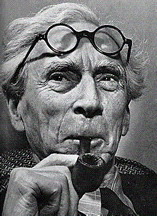
| |
| 1930年 | 英国医生海伦娜·赖特(Helena Wright,1887-1982)发表专著《婚姻里的性因素》(The Sex Factor in Marriage)。在积极投身于家庭计划的运动中,直到二战后很久了,赖特还一直执掌着英国性医学的牛耳。 | |
| 1930 -32年 |
其公共形象遭到纳粹践踏的玛格纳斯·赫希菲尔德在德国不再有安全保障。他因而开始周游世界,用数百场演讲来介绍他的新科学(他先后到过美国、日本、中国、印度、埃及、巴勒斯坦和希腊)。自此后他就没有返回德国。 | |
| 1931年 | 在劳拉·毕姆(Laura Beam)的协助下,妇科医生罗伯特·拉图·迪金森(Robert Latou Dickinson)发表了调查报告《千桩婚姻》(A Thousand Marriages)。根据问卷调查,这部调查报告分析了1000例(1200多例——自《中国性科学百科全书》.1998版,第31页——译者注)已婚妇女的性生活,发现有一半已婚妇女对婚姻性生活感到不满意。作为一位避孕的狂热支持者,迪金森同样利用其巨大的影响力来帮助其它性科学家。 | 迪金森(1861-1950) |
| 1933年 | 5月6日,一群纳粹打手抢劫赫希菲尔德性学研究所,随后当局立即查封了该研究所。研究所图书馆被人公然地焚毁,大火烧了4天后,赫希菲尔德的著作连同其他“德国犹太小子”作者的书籍,像弗洛伊德、布莱希特(Brecht,贝托尔特·布莱希特,德国诗人和戏剧家,1898-1956)、福伊希特万格[Feuchtwanger,利翁·福伊希特万格,出生于德国的作家,因历史小说丑陋的公爵夫人(1923年)而闻名,1884-1958]、魏菲尔(Werfel
,弗朗兹·魏菲尔,奥地利作家,1890-1945)和茨韦格(Stefan
Zweig,阿诺德·茨韦格,德裔作家,犹太复国主义者,1887-1968)的著作,都被付之一炬。德国大多数性科学家因为都是犹太人而失去了工作机会。他们四处逃散流亡。赫斯菲尔德于1935年猝于法国;马克斯·马库斯、恩斯特·克里莽斯基(Ernst Klimowsky)和费利克斯·热勒博尔(Felix Theilhaber)逃亡到巴勒斯坦;博尔哈德·斯伽皮尔柔(Bernhard Schapiro)经由瑞士逃到美国、最后去了以色列;西格蒙德·弗洛伊德和夏洛特·沃尔夫(Charlotte Wolff)逃到英国;汉斯·莱菲尔特(Hans
Lehfeldt)和马克斯·惠德恩(Max
Hodann)、威廉·赖希先逃到斯堪的纳维亚(Scandinavia,
瑞典、挪威、丹麦、冰岛的泛称——译者注),然后逃到美国;路德维格·拉维-愣次( Ludwig Levy-Lenz )逃往埃及;汉斯·莱菲尔特(Hans
Lehfeldt)和恩斯特·格拉芬伯逃到美国; |
热勒博尔 (1884-1956)
拉维-愣次 (1889-1966)
伊万道斯基 (1896-1996)
|
| 1936年 | 威廉·赖希(Wilhelm Reich)出版其扩充了的著作《性革命》(Die Sexualität im Kulturkampf)(第一版于1930年出版;后又用英语重写于美国-《性革命》)。赖希结合精神分析学说和马克斯的哲学理论撰写该著作。然而,他撰写著作的风格逐渐把对生物学的兴趣放到了优先的位置。他后期著作的这一典型特征是于1942年完成的《性高潮的功能》(The Function of the Orgasm)一书,书中他宣称发现了“生命力能量”(orgone energy)。的确,他建立了一个特殊的生命力能量研究所。赖希也再次提出人体性反应的4相模式:1. 机械性紧张期;2. 生物电荷载期;3. 生物电释放期;4. 机械性松弛期。 |
赖希(1897-1957) |
本中文译版于2006年4月4日翻译完毕
返回顶页 上一页 下一页
返回目录
返回首页
 II. Pioneers (1896 - 1936)
II. Pioneers (1896 - 1936)
| 1896 | The Italian
psychiatrist Pasquale Penta edits the first scientific journal devoted
entirely to sexual questions: "Archivio delle Psicopatie Sessuali".
The English private scholar Havelock Ellis begins his "Studies in the Psychology of Sex" (last volume 1928). Since they cannot be published in England, they appear in the USA and (in translation) in Germany. The English reading public first comes to know Ellis mostly through his "harmless" collection of essays On Life and Sex. |
|
| 1897 | The Berlin physician Magnus Hirschfeld founds the "Scientific Humanitarian Committee", the world's first "Gay Rights" organization. Its goal is the repeal of the German anti-homosexual law § 175 which punishes sexual contact between men. For the committee Hirschfeld edits the "Yearbook for Intermediate Sexual Stages" (1899-1923). (The centennial of the committee - 1997 - is celebrated in Berlin with a large exhibition "One Hundred Years of Gay Activism" |
|
| Hirschfeld's rival, the Berlin physician Albert Moll, publishes his "Investigations Concerning the Libido Sexualis". |
| |
| 1902 | At the initiative of Alfred Blaschko, Albert Neisser and others the "German Society for the Fight Against Venereal Diseases" is founded in Berlin. | |
| 1903 | The French writer Rémy de Gourmont publishes his "Physique de l'amour" (The Natural Philosophy of Love), a popular book containing descriptions and interpretations of animal sexual behavior. | |
| 1903 -04 |
Magnus Hirschfeld begins his statistical surveys on homosexuality. As a result of complaints, they are soon terminated by legal action. | |
| 1904 | The endocrinologist Eugen Steinach in Prague, later in Vienna, studies the effects of sex hormones on the development of the animal and human body. By means of gonadal transplantation, he succeeds in feminizing male rats and masculinizing female rats. |
| In Vienna, the ethnologist Friedrich Salomon Krauss begins publication of his yearbook "Anthropophyteia". This work (10 main volumes plus a number of complementary volumes) contains a wealth of folkloristic material about sex which Krauss had personally collected in the Balkans. He thus had become a pioneer of "ethno-sexology" whose work was greatly appreciated by Sigmund Freud, Iwan Bloch, Magnus Hirschfeld, Franz Boas and many others. However, by 1913, as a result of various obscenity trials, he is financially ruined, and his further career, even as a private scholar, is seriously curtailed. | ||
| 1905 | Fritz Schaudinn discovers the spirochete Treponema pallidum, a bacterial organism which causes syphilis. | |
| The Swiss psychiatrist Auguste Forel publishes his book "The Sexual Question" which raises demands that are revolutionary for its time (abolition of most sex laws, marriage for same-sex couples etc.). Forel deliberately combines medical and socio-political viewpoints. His well-intended proposal to practice "eugenics" (i.e. the voluntary genetic improvement of the human race by avoiding the transmission of hereditary diseases) unfortunately carries some (then unrecognized) seeds of totalitarian "racial hygiene" policies such as those later enacted by the Nazis. | ||
| Helene Stöcker and others found the Association for the Protection of Mothers ("Bund für Mutterschutz"), which fights for the protection of unmarried mothers and for the legal equality of "illegitimate" children. Her supporter, the dermatologist Max Marcuse, later becomes the editor of the "Zeitschrift für Sexualwissenschaft" (Journal for Sexology). |
| The Viennese physician Sigmund Freud publishes his "Three Essays on the Theory of Sex". In this work he describes the "normal" development of human sexuality as well as the "perversions", i.e. behaviors which do not correspond to the norm. His theory is based on the doctrine of psychoanalysis (i.e. examination of the mind or soul). According to Freud, the "sex drive" undergoes a process of "maturation" in which various "partial drives" become subordinated to the goal of mature "genitality". The three main phases of his process are: 1. Oral phase, 2. anal phase, 3. phallic phase. In late childhood there also is a "latency phase" in which the sex drive lies dormant until it reawakens during puberty. | ||
| 1906 | Paul Ehrlich and his Japanese collaborator Sahachiro
Hata develop the first effective medical treatment of syphilis (by means
of a compound called "Salvarsan").
The American anarchist and feminist Emma Goldman, an early advocate of women's rights and birth control, founds her magazine "Mother Earth" which offers political and philosophical essays as well as literary contributions by modern writers of fiction. |
|
| 1907 | The Berlin physician Iwan Bloch publishes his study "The Sexual Life of Our Time". In it he demands the establishment of sexology ("Sexualwissenschaft") as a scientific enterprise in its own right, combining the methods and insights of both the natural and the cultural sciences. What Mantegazza had still called "love" (amore), from now on permanently turns into "sexuality" in the scientific literature. | |
| 1908 | Magnus Hirschfeld edits the first Journal of Sexology ("Zeitschrift für Sexualwissenschaft"). As a monthly publication, it survives for only one year (12 issues). It contains not only medical contributions, but articles written by a wide spectrum of scientists and scholars, from anthropologists and criminologists to philologists and historians. | |
| 1909 | Albert Moll publishes his study "The Sexual Life of the Child", disregarding Freud's psychoanalytic theory, which he considers to be unscientific. In this book, Moll for the first time proposes a 4-stage description of the human sexual response: 1. the onset of voluptuousness, 2. the equable voluptuous sensation, 3. the voluptuous acme, 4. the sudden decline. | |
| The Japanese military physician and writer Ogai Mori publishes his autobiographical "Vita Sexualis", in which he describes his own adolescent sexual experiences in a detached and sober, even clinical style. (He also records the homosexual affairs of his classmates without passing any moral judgment.) The book is banned shortly after publication. | ||
| 1910 | Magnus Hirschfeld introduces the term "transvestites", distinguishing them for the first time from homosexuals. | |
| 1911 | Albert Moll publishes his "Handbuch der Sexualwissenschaften" (Handbook of Sexual Sciences), which contains articles written not only by himself, but also by other sexologists, such as Havelock Ellis. | |
| 1912 | Iwan Bloch begins the publication of his "Handbuch der gesamten Sexualwissenschaft in Einzeldarstellungen" (Handbook of Sexology in its Entirety Presented in Separate Studies). The first volume "Prostitution, vol. I" is written by himself, the second "Homosexuality in Men and Women" (1914) by Hirschfeld, a third volume by Bloch ("Prostitution, vol. II") appears posthumously. Bloch's untimely death in 1922 ends the entire ambitious project. | |
| 1913 | In Berlin, Magnus Hirschfeld, Iwan Bloch, Albert
Eulenburg and others found the first Medical Society for Sexology and
Eugenics ("Ärztliche Gesellschaft für Sexualwissenschaft und
Eugenik").
Albert Moll founds the International Society for Sex Research ("Internationale Gesellschaft für Sexualforschung"), also in Berlin. |
|
| 1914 | Magnus Hirschfeld publishes his monumental study
(1067 pages) "Homosexuality in Men and Women ("Die Homosexualität des
Mannes und des Weibes").
Iwan Bloch and Albert Eulenburg once again found the Journal for Sexology ("Zeitschrift für Sexualwissenchaft"). |
|
| In the USA, the Rockefeller family takes an interest in sex research and begins to look for ways to support it. Over the next forty years, it makes substantial amounts of money available, first through the Bureau of Social Hygiene and later through the National Research Council (Division of Medical Sciences - Committee for Research in Problems of Sex). However, the scientists in charge are uncomfortable with the subject matter, refuse to investigate it, and instead use the funds for "uncontroversial" basic biological research. They also fail to set up a sexological library and collection or to publish a sexological journal or even a bibliography. Moreover, they refuse to invite Havelock Ellis or to support or even meet the exiled Magnus Hirschfeld and his fellow sexologists Wilhelm Reich, Ernst Gräfenberg, Bernhard Schapiro, and Hans Lehfeldt when they come to the US. Eventually, the Rockefeller Foundation provides at least some funds for the work of Alfred C. Kinsey. However, this support is all too soon withdrawn under pressure from conservative political and religious forces. | ||
| 1916 | Margaret Sanger and her sister open a birth control clinic in Brooklyn, New York. It is almost immediately closed by the authorities as a "public nuisance". The Sanger sisters are sentenced to 30 days in the workhouse for having violated state obscenity laws. In spite of these and similar difficulties, Margaret Sanger remains active for many decades in the family planning movement, becoming its most influential organizer not only in the US, but also internationally. For excerpts from her autobiography, click here. |
|
| 1919 | Magnus Hirschfeld opens the first "Institute for Sexology" in Berlin. |
| 1921 | In Prague, the university creates a chair of sexual
pathology for the dermatologist Prof. Pecirka as a first step towards
establishing a sexological institute. Pecirka had trained with Hirschfeld
in Berlin, and, after his unexpected death, the university in 1929 - 1930
sends another young dermatologist, Josef
Hynie, to Hirschfeld's institute for training. Hynie succeeds in
completing the task left unfinished by his predecessor. He retires as the
director of the university's Sexological Institute in 1974.
In Moscow, the educator Vera Schmidt founds a children's home. Following psychonanalytical principles, she practices an anti-authoritarian, positive sex education. This also means no interference with masturbation and mutual sexual exploration. |
|
| 1923 | Max Marcuse publishes his "Handwörterbuch der Sexualwissenschaft" (Hand Dictionary of Sexology) which contains original contributions of many prominent writers, including Freud. | |
| 1926 | In Berlin, Albert Moll organizes the I. International
Congress for Sex Research. The opening session is held at the Reichstag
(German national parliament). A second congress follows 1930 in
London.
The Dutch gynecologist Theodor Hendrik van de Velde publishes his book "Ideal Marriage", a very popular work of adult sex education which tries to encourage men and women to shed their inhibitions within their sexual relationships and to develop their sensuality. Magnus Hirschfeld begins the publication of his 5-volume "Sexual Knowledge" (Geschlechtskunde) whose last volume appears in 1930. |
|
| 1928 | Magnus Hirschfeld, supported by the Danish physician J. H. Leunbach, organizes a congress in Copenhagen and, on that occasion, founds the World League for Sexual Reform ("Weltliga für Sexualreform"). Presidents are Hirschfeld, Havelock Ellis and Auguste Forel. (Additional Congresses of the League: London 1929, Vienna 1930 and Brno 1932.) Among other things, the League demands the legal and social equality of the sexes, the right to contraception and sex education, reform of sex legislation (decriminalization of 'victimless' sex crimes). | 
|
| 1929 | The ethnologist Bronislaw
Malinowski publishes his work "The Sexual Life of Savages in
North-West Melanesia". The less repressive sexuality described here - and
in later books by Margaret Mead and others - offers an interesting and
influential contrast to "Western" attitudes.
Katherine B. Davies publishes her massive study "Factors in the Sex Lives of Twenty-Two Hundred Women". The book documents, in the majority of cases, satisfying regular sexual intercourse, masturbation before and after marriage as well as the use of contraceptives. The Spanish physician and endocrinologist Gregorio Marañon publishes his "Los estados intersexuales". Amended and expanded, it becomes the basis for his most important work "La evolucion de la sexualidad humana y los estados intersexuales" 1930 (The Evolution of Human Sexuality and the Intersexual Stages). |
|
| In Bangkok, the French judge René Guyon, who, earlier in the century, had been called to Thailand by the Thai government, begins his radical "Studies in Sexual Ethics". He demands the right to sexual fulfillment for all women and men as long as they do not violate the rights of others. Of the 9 volumes written until 1944, only 6 are published in French (2 also in English). In the 1940's, Guyon also attacks the repressive sexual policies of the League of Nations, and he repeats his criticism in 1951, when he accuses the United Nations of betraying the idea of sexual rights in their Universal Declaration of Human Rights. | ||
| The Japanese sexological pioneer Senji Yamamoto is assassinated by a right-wing extremist. | ||
| The English philosopher Bertrand Russell publishes his book "Marriage and Morals", which argues for more and better sex education, the right to premarital and extramarital intercourse and divorce on demand for childless couples. With his wife, Dora Russell, he also runs a coeducational school in which the young students are given considerable freedom. All of this is later used against him in the USA where he is denied a professorship on the grounds that it would amount to establishing a "chair of indecency". | ||
| 1930 | The English physician Helena Wright publishes her book "The Sex Factor in Marriage". Active in the movement for family planning, she remains a leading figure in British sexual medicine until long after World War II. | |
| 1930 -32 |
Magnus Hirschfeld, whose public appearances are subject to increasing Nazi harassment, is no longer safe in Germany. He therefore begins a trip around the world, introducing his new science in hundreds of lectures (USA, Japan, China, Indonesia, India, Egypt, Palestine, Greece). He does not return to Germany. | |
| 1931 | The gynecologist Robert Latou Dickinson, in collaboration with Laura Beam, publishes his study "A Thousand Marriages". This study, based on questionnaires, analyzes the sex lives of one thousand married women, finding that half of them do not find sexual satisfaction in their marriages. Dickinson, an ardent supporter of contraception, also uses his considerable influence in helping other sexologists. | |
| 1933 | On May 6, a Nazi goon squad plunders Hirschfeld's Institute for Sexology, which is then promptly closed by the authorities. The library is publicly burned four days later together with the books of other "Un-German" authors like Freud, Brecht, Feuchtwanger, Werfel and Stefan Zweig. Most sexologists lose their opportunities to work, because they are Jewish. They flee into exile. Hirschfeld dies 1935 in France, Max Marcuse, Ernst Klimowsky, and Felix Theilhaber escape to Palestine, Bernhard Schapiro via Switzerland to the USA and finally to Israel, Sigmund Freud and Charlotte Wolff to England, Max Hodann to Sweden, Wilhelm Reich first to Scandinavia, then to the USA, Ludwig Levy-Lenz to Egypt, Hans Lehfeldt and Ernst Gräfenberg to the USA, Arthur Kronfeld to the USSR, Eugen Steinach and Herbert Lewandowski to Switzerland. Friedrich Salomon Krauss dies in Vienna in 1938 before the "Anschluss". Albert Moll remains in Berlin. He is spared the transportation to one of the death camps, because he dies of natural causes in 1939. |
|
| 1936 | Wilhelm Reich publishes his expanded work "Die Sexualität im Kulturkampf" (first version 1930; later rewritten in the USA as "The Sexual Revolution"). Reich combines psychoanalysis and the philosophy of Marx. However, gradually biological interests move to forefront. Typical for this later phase of his work is the book "The Function of the Orgasm" 1942, in which he claims the discovery of an "orgone energy". Indeed, he founds a special orgone energy research institute. Reich also again proposes a 4- stage model of the human sexual response: 1. mechanical tension, 2. bio-electric charge, 3. bio-electric discharge, 4. mechanical relaxation. |
